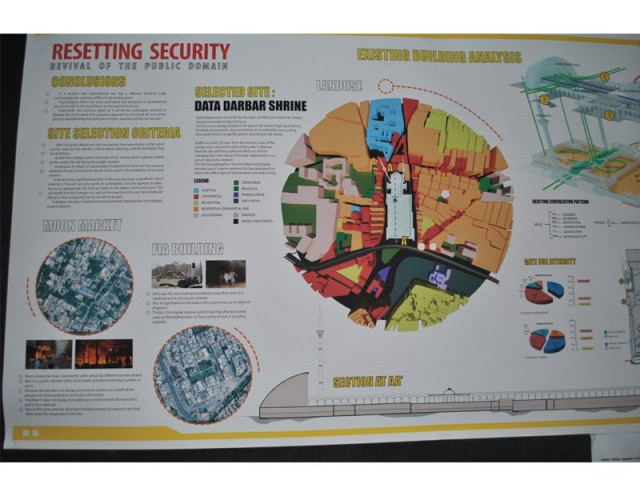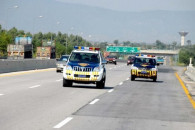Architectural work: Theses look at how to build in congested spaces
NCA students design shelter homes for villagers arriving in Lahore to find jobs.

Samaa Khan has proposed a design system under which buildings can be transformed to be used for other than the original intended users.
The theses by graduating architecture students displayed at the NCA art gallery explore ways to develop infrastructure across congested spaces. Some of these focus on designing buildings that would be safe from bomb and terror threats, alleviating road congestion and preserving the theatre and film culture.
The theses have been displayed by 34 students graduating from the NCA in 2013. Six of them have got distinctions while eight passed out with honours.
Komal Lodhi surveyed the Mehmood Booti garbage dumping site for her thesis. She has proposed a park, a research and awareness centre and a facility to generate electricity from the waste.
“I met Khalid Majeed, a senior official at the Lahore Waste Management Company, and gave him my ideas. If my ideas are followed, 2,000 homes can get a 24-hour electricity supply,” she said.
Hajra Cheema proposed building shelter homes for villagers who come to Lahore to work and have no homes here. “I visited the City Railway Station and the Lunda Bazaar and proposed low-cost housing for the homeless one see camped there,” she said.

Mohammad Awais Asif, who played in the Pakistan under-19 cricket team, has designed a sports complex he says can help improve the confidence of players training there. “I am inspired by Santiago Calatrava, the Spanish architect, engineer and painter,” he said.
Mariyam Muslehuddin said she consciously used art to populate the space in the building she designed.
After visiting Shabistan Cinema on Abbott Road and watching movies there, she said she had a building housing “Lollywood Memorabilia comprising seven galleries”.
“I would like to take seven scenes to build seven collages for the seven galleries to create an effect similar to walking through an entire film. The idea of the collage is to tell a story. The idea is to translate a collage into a model to create interior space,” she said.
Bilal Ejaz has worked on mitigating infrastructural damage around the Lorry Ada opposite to the Lahore Fort.

Bilal Saeed Malik has designed a facility to address the rising security threats. “My work suggests an architectural response to invasive security checks in place around old buildings and shrines,” he said.
Malik has developed a security system for the Data Darbar shrine that takes into account the traffic in its surroundings.
Usman Tariq has worked on a model for a post-apocalypse world.
Samaa Khan has proposed a design system under which buildings can be transformed to be used for other than the original intended users.
Armaghan Aslam has proposed a design for the shrine of Bulleh Shah in Kasur.
Ameer Mustafa has designed an architecture school.
Hajra Cheema says of the work: “Most of these concepts will require lots of intervention and money if picked for implementation.”
Attiquddin Ahmed, a teacher at the NCA Architecture Department since February 2012, said the students were told to propose solutions for everyday problems. He said the theses would always be available at the NCA library. “It is a public library. The information will be available to everybody,” he said.
Published in The Express Tribune, January 21st, 2013.





1726393023-0/BeFunk_-(77)1726393023-0-208x130.webp)













COMMENTS
Comments are moderated and generally will be posted if they are on-topic and not abusive.
For more information, please see our Comments FAQ